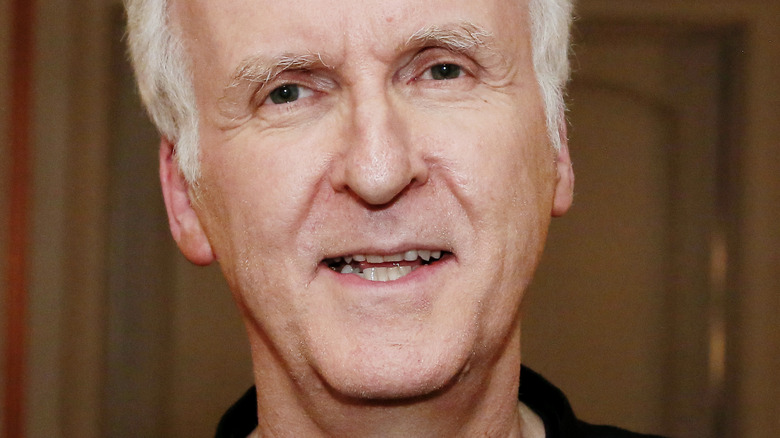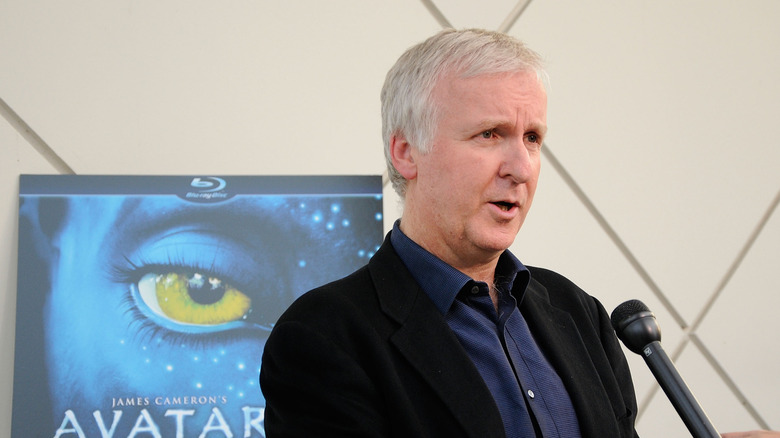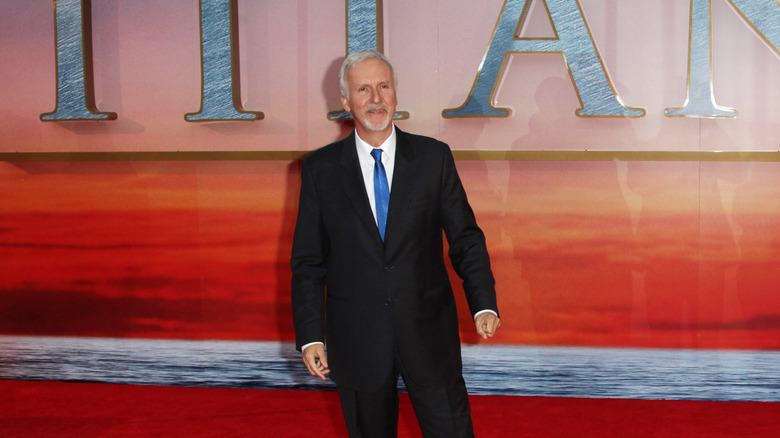James Cameron Is Not Only A Leader In Film, But Also In Science
James Cameron has become a household name thanks to decades of cinematic milestones. His films are recognized around the world as not only blockbusters but memorable cultural moments that span generations. The Oscar-winning director's work runs the gamut from the heartstopping sci-fi of "Aliens" to the tragic love story of "Titanic. "
Something prevalent in each film is its connection to larger-than-life adventures. Cameron himself has never been one to shy away from those experiences in his own life. That aspect is something that has driven not only the subjects of his films but also unique opportunities beyond the entertainment industry. A sense of wonder extends to more than his films. "I know when I go on a sub I'm going to see something I've never seen before, and the deeper you go the higher the likelihood I might see something nobody's seen before," he told The Guardian Australia. "You can't get that in a movie theater."
Cameron's visionary approach to filmmaking comes in part from his neverending scientific curiosity. His pursuits of space and the depths of the ocean are going beyond anything audiences have seen in the director's best-known films.
Cameron's infatuation with space dates back to his teenage years
According to Space.com, James Cameron's fascination with space first came at an early age. Cameron remembers seeing and experiencing various shuttle launches and how they touched the senses, which was even more intriguing to the then-teenager.
Since then, he's been trying his luck at various attempts to be a part of a growing space race among private citizens. One of the most interesting had the director team up with an unlikely group of investors, including former Google CEO Larry Page. Their goal was simply to find mining opportunities in asteroids (via CBS News). The venture would fail to reach its goal but the process served as yet another learning experience for Cameron and his crew.
Decades of work with NASA have also given Cameron a front-row seat to important moments for the agency. He aided in the design of a camera that is currently on the Mars rover; it provides scientists and the curious an expansive glimpse at the red planet's fascinating surface. Former NASA head Daniel Goldin got to know the director over his time with the agency. His impression of Cameron speaks to the heroes who star in his projects. "The man was born with an explorer's instincts and capacity," Goldin said in a GQ article.
Titanic came from years of oceanic exploration
Among all of James Cameron's celebrated projects, two ocean-based experiences have made history. In one case, it helped tell the story of one of the world's most devastating ship disasters. "Titanic" won praise from both critics and fans upon its release. The 1997 epic used a fictional love story to teach viewers about how the seemingly unsinkable ship actually ended up sinking — a mystery that had baffled historians for years.
Cameron did exhaustive research to ensure his film had the details of that fateful voyage just right. Since making the film, he continued to go down to the wreckage — in total doing over 33 dives between the 1997 release and 2017 (via USA Today). National Geographic's "Titanic: 20 Years Later with James Cameron" helped him reflect on that push to continue learning. "If we could have just done a little more on that expedition," he said during a Collider interview. "If we could have just had one more dive. If our vehicle wouldn't have failed at a critical moment, we would have gotten into that last corner, or down into the boiler room."
The special also gave Cameron a chance to talk about the film's meaning for the victims' families. While he regretted how some real-life figures were portrayed, he also revealed the special remembrance that occurs during every expedition. According to the director, he and his crew members go out at the time the ship sank and toast the passengers and crew (via EW).
The director tested the limits with Deepsea Challenge 3D
The 2014 documentary "Deepsea Challenge 3D" offered the celebrated director a second chance at changing how audiences see history; the expedition went further than many will ever see, going down 35,787 feet into the Mariana Trench. This solo outing left a lot on the line for Cameron as he risked his own life as well as his reputation as the designer of the craft.
The filmmaker made sure that every detail of the event was captured for posterity; the results would become "Deepsea Challenge 3D." More than a voyage to an uncharted place, it acted as a research project. Deepsea Challenger was designed to collect rock, sediment, and biological samples. For this aspect, Cameron cooperated with top scientists from the Scripps Institution of Oceanography, the University of Hawai'i, and the NASA Jet Propulsion Laboratory. The team covered a wide range of interests, such as marine biology and microbiology, astrobiology, marine geology, and geophysics (via National Geographic).



